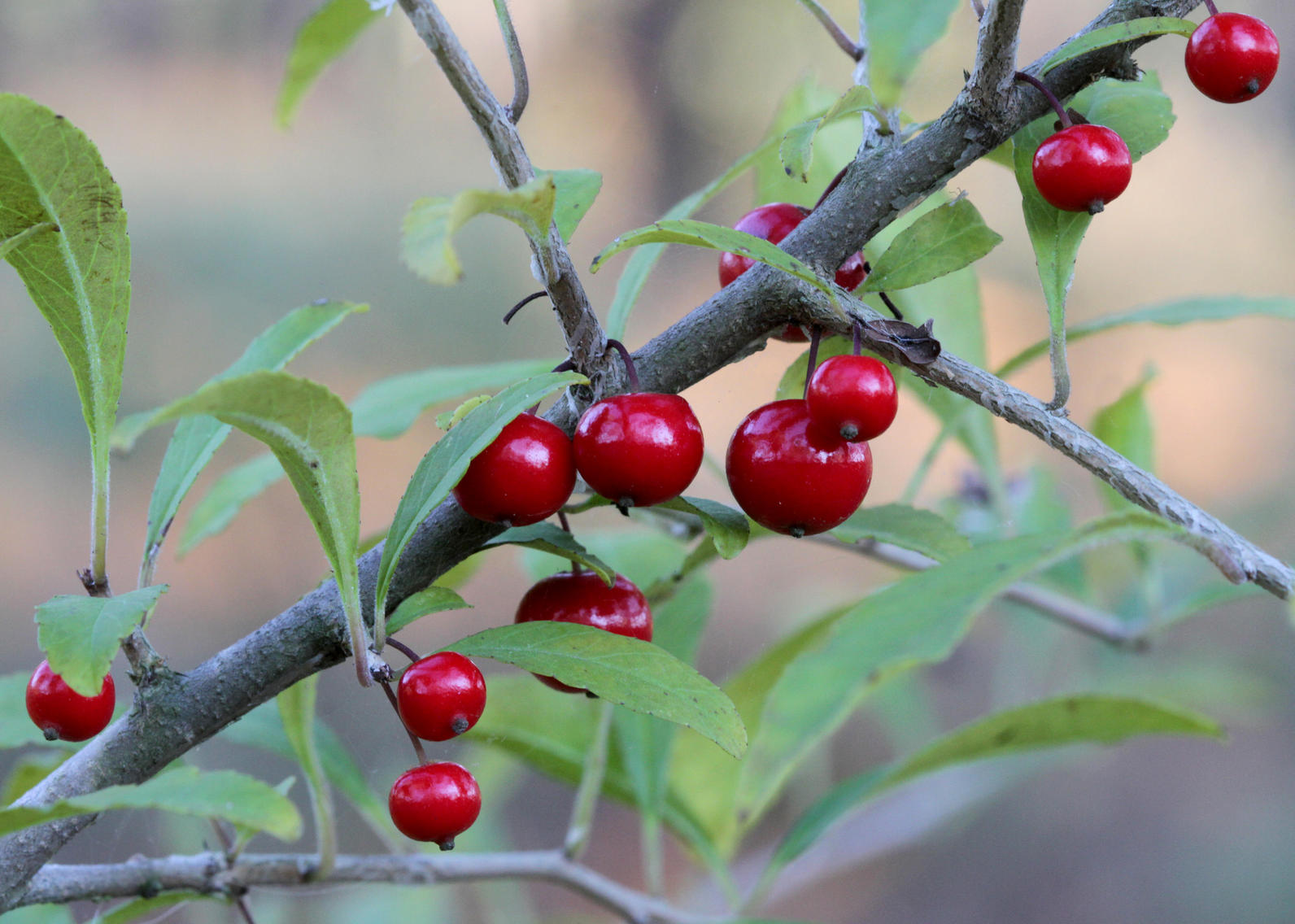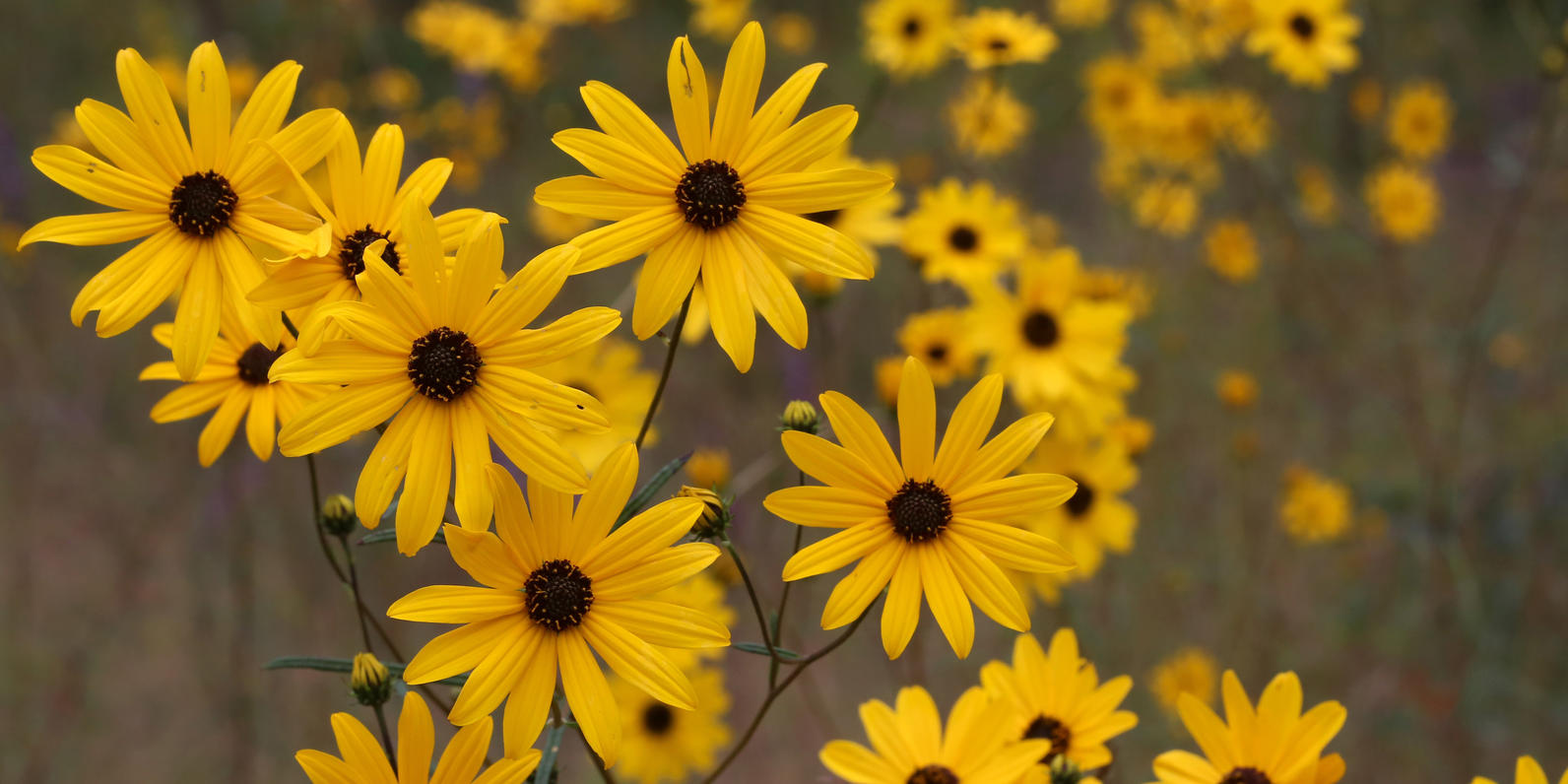This summer, we asked you to help select our 2018 Bird-Friendly Native Plants of the Year list. The votes were tallied, and now the winners are in.
All of our Bird-Friendly Native Plants of the Year play an important role in providing the food birds need to survive and thrive. Our natural wildlife - including birds - have adapted to the resources provided by our state’s native plant population – these plants and trees are, in a real sense, home for our birds.
The 2018 list provides wholesale and retail partners with a guide of what to grow and sell to bird-friendly gardeners like you. Meet your Bird-Friendly Native Plants of the Year for 2018!
Summer Berries: Blueberry Vaccinium: The ultimate bird-friendly, people-friendly native plant. Blueberries support 286 moth and butterfly species in North America. Birds who love this plant include Northern Mockingbird, Blue Jay, Gray Catbird, Brown Thrasher and Red-bellied Woodpecker.
Summer-Fall Berries: Possumhaw Viburnum nudum: This plant has beautiful leaves that turn red and hang on all winter long, falling off just in time to make way for new spring growth of ripening clusters of berries. Our native Viburnum species support 97 native moths and caterpillars. Birds who love this plant include Wood Thrush, Northern Mockingbird, Gray Catbird and Cedar Waxwing.
Fall Berries: Blackhaw Viburnum Viburnum prunifolium: Your plant will have fruit in September and October when the berries ripen from reddish to blue-black. Birds who love this plant include Wood Thrush, Northern Mockingbird, Gray Catbird, Brown Thrasher and Cedar Waxwing.
Winter Berries: Deciduous Holly Ilex decidua: Grow this plant in the lower mountains, piedmont and coastal plain. Expect fruit September through January at least. Birds who love this plant include Brown Thrasher, Cedar Waxwing, Red-bellied Woodpecker and Downy Woodpecker.

Nectar for Hummingbirds (Early Spring): Wild Columbine – Aquilegia canadensis – The columbine will sport red and yellow flowers from March through May. It’s important for Ruby-throated Hummingbirds arriving in NC after making a nonstop crossing of the Gulf of Mexico. The Wild Columbine is endorsed by Dr. Larry Mellichamp, who always sees his first hummingbird here.
Nectar for Hummingbirds (Spring): Coral Honeysuckle Lonicera sempervirens – Flowering March through July and often during the entire time hummingbirds are in NC. The Ruby-throated Hummingbird loves this plant. You may recognize it from the cover of Audubon’s wildly popular Bird-Friendly Native Plants Brochure.
Nectar for Hummingbirds (Summer/Early Fall): Spotted Bee Balm Monarda punctata: This plant has delicately purple-spotted pale white, yellow, or pink tubular flowers, and attracts hummingbirds and butterflies July through September. Plants are 2 to 3 feet tall, and flowers are beautiful in a subtle way. Birds who love this plant include the Ruby-throated Hummingbird.
Seeds for Finches & Sparrows:
New York Ironweed Vernonia noveboracensis: Great for butterflies and other pollinators, the ironweed seeds August through October – just in time for fall migration. Birds who love this plant include American Goldfinch, House Finch and Song Sparrow.
Swamp Sunflower – Helianthus angustifolius: An accurate name – the Swamp Sunflower will thrive back in a wet ditch in full sun. This native sunflower grows 5 to 9 feet tall, with bright yellow flowers from August until first frost. It produces seeds September through November supporting 73 native caterpillar species! Birds who love this plant include Song Sparrow, Eastern Towhee, Blue Grosbeak, Indigo Bunting, Northern Cardinal and Tufted Titmouse.

Seeds/Evergreen Groundcover: Green and Gold Chrysogonum virginianum – A deer-resistant groundcover option, the evergreen Green and Gold will grow bright yellow flowers March through June, and seeds April through July. Growing 6 to 12 inches tall – this is a fabulous bird-friendly replacement for English ivy! Birds who love this plant include American Goldfinch, Song Sparrow and House Finch.
Nuts for Woodpeckers: Willow Oak Quercos phellos: Willow is a very popular oak known for its fall golden color and narrow leaves. Birds who love this plant include Woodpeckers, jays and turkeys who depend on its acorns, and chickadees who need up to 9,000 caterpillars to raise one batch of babies.
Caterpillar Trees: Southern Sugar Maple Acer floridanum
These trees are great for a fabulous fall color, and Maples are a top-ten caterpillar tree; they support 287 species in North America. More caterpillars = more babies! Birds who love this plant include White-breasted Nuthatch, Carolina Chickadee, Tufted Titmouse and House Finch.
Visit a participating retailer to find plants you can start growing right now.





